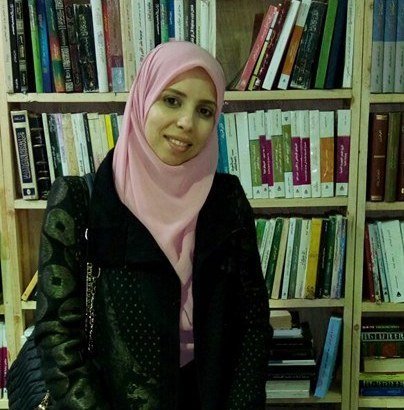Meet the Sudanese Protesters Who Ended al-Bashir’s 30 Year Reign
“We won’t recognize the military council until they meet our demands, we trust SPA and they are our representatives.”
Since April 6 thousands of Sudanese have sat in outside the army headquarters in the capital Khartoum despite the ouster of President Omar al-Bashir last week by the Sudanese military. Al-Bashir had served as the President of Sudan for 30 years, from 1989 until the recent protests.
After an announcement by the military council declared a transitional period would last two years, many expressed fear Sudan was establishing a police state.

Sudanese Protests, April 6 outside army headquarters Khartoum (Photo: Reem Salah)
The Sudanese Professionals Association (SPA) – an umbrella group made up of multiple trade unions – called for the Sudanese to join the sit-in and protect it from any attempt at dispersal. Protesters said they will continue to demonstrate to assure a power transition to a civilian government.
The Sudanese Sit-in Persists Even after Al-Bashir Ousted
Reem Salah, 22, a marketer, says she is participating in the sit-in because, as she told Citizen Truth, she can’t trust the military council. “We have experienced previously the military rule. Till now they are giving us empty words, nothing concrete in reality.” However, she said she is optimistic about the outcome because it is a people’s revolution.
Another citizen, Dr. Entisar Ebrahim, 46, Assistant Professor at Om Darman Islamic University, explained the Sudanese mistrust the current military junta because of its ties with the preceding governments. “They will revenge on us; the national council party has ruled for 30 years, they won’t give up power that easily.”

A Sudanese protestor covering their face for protection from tear gas, April 7 during day two of a sit-in at army headquarters in Khartoum. (Photo: Dr. Entisar Ebrahim)
This skepticism has led so far to the military council abiding by some of the protesters’ demands. As a result, the military recently removed many top officials, such as general prosecutor Omar Abdel-Salam, and arrested the two brothers of the ousted president Al-Bashir.
What Do the Sudanese Demonstrators Want?
Salwa, 42, a high school science instructor, summarized for Citizen Truth the demands of protesters. “Citizens want to see a regime that applies justice and accountability, that serves the nation instead of personal interests, provides freedom of speech and respects competencies.”

Daughters of Dr. Entisar during the Sudanese protests, April 11. (Photo: Dr. Entisar Ebrahim)
Students had their say too in the demonstrations, such as Mohamed Ashraf, 15, a high school student. Along with his sister, a medical student, he insisted on protesting against Al-Bashir regime, hoping to see a bright new era in their country.
The Role of the SPA in Sudan’s Demonstrations
The rising prices of basic goods triggered protests in December 2018. Cities such as Atbara and Port Sudan saw the first waves of demonstrations; the capital Khartoum followed after. By January, more than 800 protesters had been arrested, 131 injured and 24 were killed, said the Sudanese general prosecutor before his dismissal.
The Sudanese Professionals Association began to represent protesters after issuing a declaration for freedom and change in January and called for an immediate departure of Al-Bashir and his regime.

Sudanese Protests, April 13, Khartoum (Photo: Reem Salah)
Since then, the SPA spearheaded the pro-democracy demonstrations, communicating with protesters through its Facebook page and organizing sit-ins and marches. The SPA recently announced it is in talks with the military council to discuss the transitional period.
On its website, the SPA introduces itself as an independent trade union and body, formed in October 2016 by the Central Committee of Sudanese Doctors, the Sudanese Journalists Network and the Democratic Lawyers Alliance.

Day one of the Sudanese sit-in, April 6. A protestor wears a medical mask to cover her face because of tear gas. (Photo: Entisar Ebrahim)
It is uncertain what the results of the negotiations between the military council and the opposition will be. Protesters are skeptical of the military’s intentions even though they originally asked the military for its help to overthrow Omar Al-Bashir after 30 years of ruling Sudan.
Featured Image: Sudanese protests in Khartoum on April, 18.













